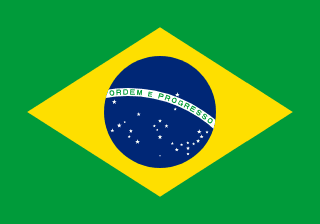Brazil Flag Story

The story behind the vibrant colors and symbols of the Brazilian flag.
Colors: green, yellow, blue, white
Pattern: Green field with yellow diamond and blue circle
The Brazilian Flag: Order and Progress
The Brazilian flag, known as "A Auriverde" (The Gold and Green), is a vibrant and symbolic representation of the largest country in South America. Its distinctive design reflects Brazil's history, natural resources, and national aspirations.
History
The current Brazilian flag was officially adopted on November 19, 1889, just four days after Brazil became a republic. However, its history is closely tied to the country's journey to independence and beyond.
- The flag's design was created by Raimundo Teixeira Mendes, with the collaboration of Miguel Lemos, Manuel Pereira Reis, and Décio Villares.
- It replaced the flag of the Empire of Brazil, which had been in use since 1822.
- The new republican design incorporated elements from the imperial flag while introducing new symbolism.
Design and Symbolism
The Brazilian flag features a green field with a large yellow diamond in the center. Within the diamond is a blue circle with 27 white five-pointed stars, and a white band with the national motto.
- The green background represents Brazil's lush forests, particularly the Amazon rainforest.
- The yellow diamond symbolizes the country's vast gold and mineral wealth.
- The blue circle depicts the sky over Rio de Janeiro on the morning of November 15, 1889, when the republic was proclaimed.
- The 27 stars represent Brazil's 26 states and the Federal District.
- The white band bears the national motto "Ordem e Progresso" (Order and Progress).
Cultural Significance
The Brazilian flag is a source of national pride and is widely displayed throughout the country:
- It's prominently featured during national holidays, such as Independence Day (September 7) and Republic Day (November 15).
- The flag is often seen at sporting events, especially during international soccer competitions.
- Many Brazilians display the flag at their homes or wear clothing with flag motifs to show patriotism.
- The flag's colors—green and yellow—are strongly associated with Brazilian national identity and are often used in various contexts to represent the country.
Interesting Facts
- The stars on the flag form constellations visible in the Brazilian sky, including the Southern Cross.
- The arrangement of the stars is not symmetrical; it reflects the sky as it would have been seen from Rio de Janeiro at 8:30 am on November 15, 1889.
- The motto "Ordem e Progresso" was inspired by French philosopher Auguste Comte's positivism, which influenced early republican leaders in Brazil.
- The flag must be changed if a new state is created or an existing one is dissolved, as the number of stars corresponds to the number of Brazilian states plus the Federal District.
The Brazilian flag continues to be a powerful symbol of national unity, representing the country's natural beauty, resources, and aspirations for the future. Its unique design and rich symbolism make it one of the most recognizable flags in the world.
References
For more information about the Brazilian flag, you can consult these reliable sources:
- Official website of the Brazilian Government (in Portuguese)
- World Atlas: Flag of Brazil
- Britannica: Flag of Brazil
- CIA World Factbook: Brazil
- University of São Paulo: Symbols of the Republic (in Portuguese)
These sources provide detailed and accurate information about the history, design, and significance of the Brazilian flag.